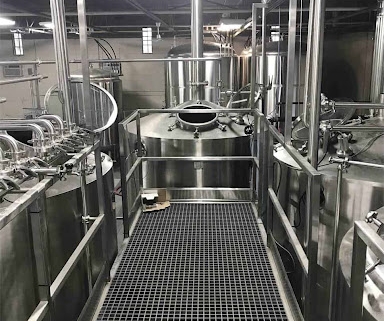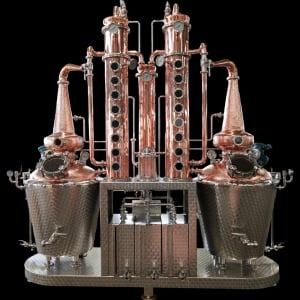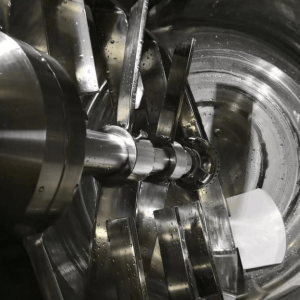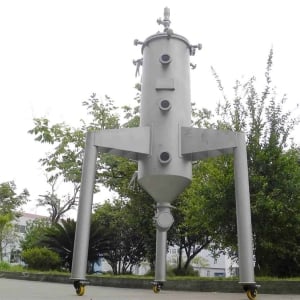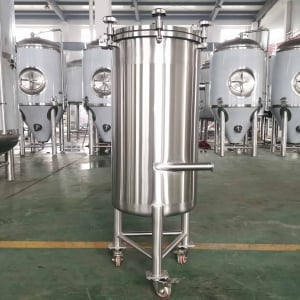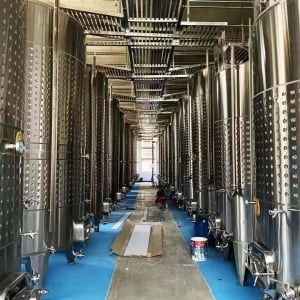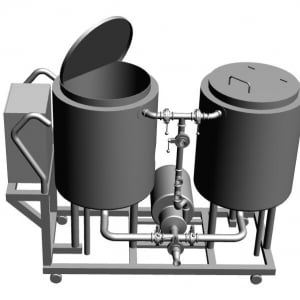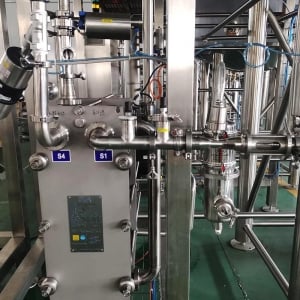Stainless Steel Beer Tanks
Overview of Stainless Steel Beer Tanks
Stainless steel beer tanks are essential components in modern brewing systems, offering durability, ease of cleaning, and resistance to corrosion. These tanks come in various sizes and configurations to accommodate different brewing processes and production scales. Whether you’re a homebrewer or running a commercial brewery, understanding the features, benefits, and considerations of stainless steel beer tanks is crucial to optimizing your brewing operations.
Equipment Guide for Stainless Steel Beer Tanks
When choosing stainless steel beer tanks, several factors come into play, including capacity, design, and specific brewing needs. These tanks are categorized based on their use in the brewing process, such as fermenters, brite tanks, and conditioning tanks.
Types of Stainless Steel Beer Tanks
Stainless steel beer tanks vary in design and purpose. Here’s a detailed table outlining different types:
| Tank Type | Description | Common Features |
|---|---|---|
| Fermenters | Vessels where wort ferments into beer, converting sugars to alcohol and CO2 | Conical bottoms, pressure-rated, cooling jackets |
| Brite Tanks | Used for clarifying and carbonating beer before packaging | Bright finish, carbonation stone, pressure-rated |
| Conditioning Tanks | For aging and maturing beer, allowing flavors to develop | Temperature control, pressure-rated, various sizes |
| Serving Tanks | Directly serve beer from these tanks, often used in brewpubs | Insulated, draft faucets, cooling jackets |
| Hot Liquor Tanks | Hold hot water for mashing and sparging processes in brewing | Insulated, heating elements, temperature control |
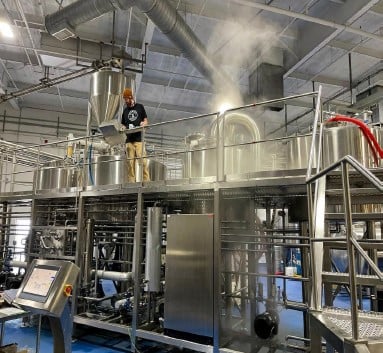
Brewing Process with Stainless Steel Beer Tanks
Understanding the brewing process helps in selecting the right stainless steel beer tanks. Here’s a step-by-step explanation:
Mashing
The brewing process begins with mashing, where crushed grains are mixed with hot water in a mash tun to convert starches into fermentable sugars. Hot liquor tanks supply the necessary hot water for this stage.
Lautering
The mash is transferred to a lauter tun, where the liquid wort is separated from the grain husks. Stainless steel construction ensures easy cleaning and durability during this process.
Boiling
The wort is boiled in a brew kettle to sterilize it and to extract flavors from hops. Stainless steel kettles with built-in heating elements or external heat sources are used.
Fermentation
The boiled wort is cooled and transferred to fermenters. Yeast is added, and fermentation begins. Conical fermenters made of stainless steel allow for easy yeast collection and cleaning.
Conditioning
After fermentation, the beer is transferred to conditioning tanks. These tanks enable the beer to mature, developing flavors and carbonation.
Packaging
Finally, the conditioned beer is moved to brite tanks for carbonation and clarification before being packaged in bottles, cans, or kegs.
Table of Capacity, Spaces, Design, Layout, Customization
Here’s a comprehensive table detailing various parameters of stainless steel beer tanks:
| Parameter | Details |
|---|---|
| Capacity | Ranges from 5 gallons (homebrewing) to 1000+ barrels (commercial brewing) |
| Space Requirements | Depends on tank size; smaller tanks for home use, larger tanks need ample space in commercial setups |
| Design Features | Conical bottoms, jacketed for temperature control, pressure-rated |
| Layout Options | Vertical or horizontal orientation, stacked configurations |
| Customization | Available options include additional ports, custom dimensions, and specialized coatings |
Suppliers and Price Range
Selecting the right supplier is crucial for obtaining quality stainless steel beer tanks. Here’s a detailed table of some prominent suppliers and their price ranges:
| Supplier | Price Range | Details |
|---|---|---|
| SS Brewtech | $500 – $5,000 | Homebrewing and small-scale brewing tanks |
| Blichmann Engineering | $1,000 – $10,000 | Innovative designs, customizable options |
| Speidel | $2,000 – $15,000 | High-quality German engineering, various sizes available |
| JVNW Inc. | $5,000 – $50,000+ | Commercial-scale tanks, fully customizable |
| Ager Tank & Equipment | Varies widely | New and used tanks, various brands and customization options |
Installation, Operation, Maintenance
Ensuring proper installation, operation, and maintenance is essential for the longevity and efficiency of stainless steel beer tanks. Here’s a detailed table:
| Aspect | Details |
|---|---|
| Installation | Requires professional setup, proper sanitation, and integration with existing brewing systems |
| Operation | User manuals provided, training recommended for commercial operations |
| Maintenance | Regular cleaning with caustic solutions, periodic inspections for wear and tear |
How to Choose a Supplier
Choosing the right supplier involves several considerations. Here’s a detailed table outlining these factors:
| Factor | Details |
|---|---|
| Reputation | Look for reviews and testimonials from other brewers |
| Customization Options | Ability to tailor tanks to specific brewing needs |
| Support and Training | Availability of technical support and training programs |
| Warranty and Guarantee | Warranty terms and guarantees offered by the supplier |
| Price and Value | Balance between cost and quality, consider long-term value rather than upfront cost |
Comparing Pros and Cons
Here’s a table comparing the advantages and limitations of stainless steel beer tanks:
| Aspect | Advantages | Limitations |
|---|---|---|
| Durability | Long-lasting, resistant to corrosion | Higher initial cost compared to other materials |
| Ease of Cleaning | Smooth surfaces, less prone to bacterial buildup | Requires proper cleaning agents and procedures |
| Temperature Control | Effective insulation and cooling/heating jackets | Additional cost for advanced temperature control features |
| Aesthetics | Professional appearance, shiny finish | Requires regular polishing to maintain appearance |
Additional Tables for Parameters
Tank Sizes and Spaces
| Tank Size | Space Requirements |
|---|---|
| 5-10 gallons | Suitable for homebrewing setups, compact and fits in small spaces |
| 1-10 barrels | Small to medium-sized breweries, requires dedicated brewing area |
| 10-100 barrels | Medium to large-scale breweries, significant space needed |
| 100+ barrels | Industrial breweries, extensive space and infrastructure required |
Price Ranges for Various Sizes
| Size Range | Price Range |
|---|---|
| 5-10 gallons | $500 – $1,000 |
| 1-10 barrels | $2,000 – $10,000 |
| 10-100 barrels | $10,000 – $50,000 |
| 100+ barrels | $50,000+ |
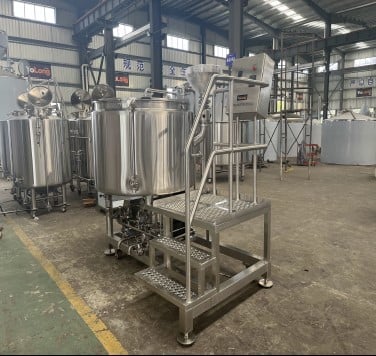
FAQ
| Question | Answer |
|---|---|
| What are the benefits of stainless steel beer tanks? | Durability, ease of cleaning, corrosion resistance, professional appearance |
| How do I clean stainless steel beer tanks? | Use caustic cleaning solutions, followed by thorough rinsing and sanitizing |
| Can I customize my stainless steel beer tanks? | Yes, many suppliers offer customization options for size, ports, and additional features |
| What should I consider when choosing a supplier? | Reputation, customization options, support, warranty, and value for money |
| Are stainless steel beer tanks worth the investment? | Yes, despite the higher initial cost, their durability and ease of maintenance offer long-term value |
Conclusion
Stainless steel beer tanks are a pivotal investment for any brewery, providing durability, efficiency, and a professional edge to your brewing operations. From homebrewing enthusiasts to commercial brewers, understanding the intricacies of these tanks, from their types and uses to maintenance and supplier selection, can significantly enhance your brewing experience. With the right information and resources, you can make informed decisions that will benefit your brewing endeavors for years to come. Cheers to better brewing!

